Evolution of the Cash Register – Cash Drawer to Smart Registers
By Alexander -
Apr 22, 2025
- 7 minutes read
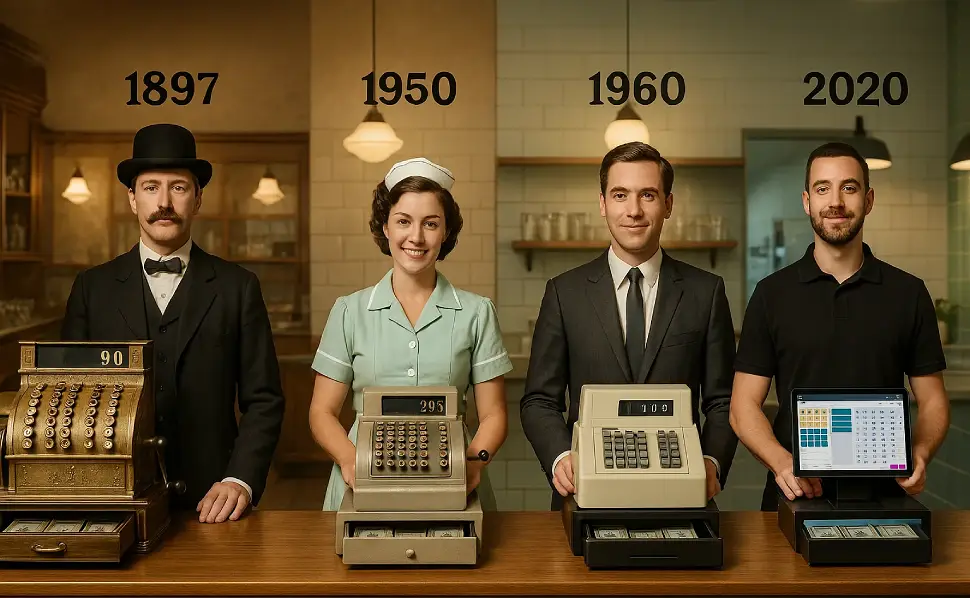
The Origin of the Cash Register: A Chronological History
Cash registers and cash drawers are everyday sights in stores, restaurants, hotels, bars, garages, etc. The history of the cash register is intriguing, dating back to the nineteenth century. From simple mechanical devices to complex digital systems, the evolution of the cash register mirrors broad technological and economic advancements. In this article, we take you on a journey through time, chronologically describing the emergence and development of the cash register. What does the word "cash register" mean? The word "cash register" derives from the French caisse, meaning "money box," which in turn comes from the Latin capsa, meaning "box" or "chest." The original meaning thus refers to a physical container for money, forming the basis for later technological applications. The Need for Control in the 19th Century In the 19th century, retail was rapidly growing, particularly in the United States and Europe. Entrepreneurs faced a growing problem: employee theft, known as 'pilfering.' There was a need for a system to reliably record transactions and verify income. The need was clear, but how do you solve it?
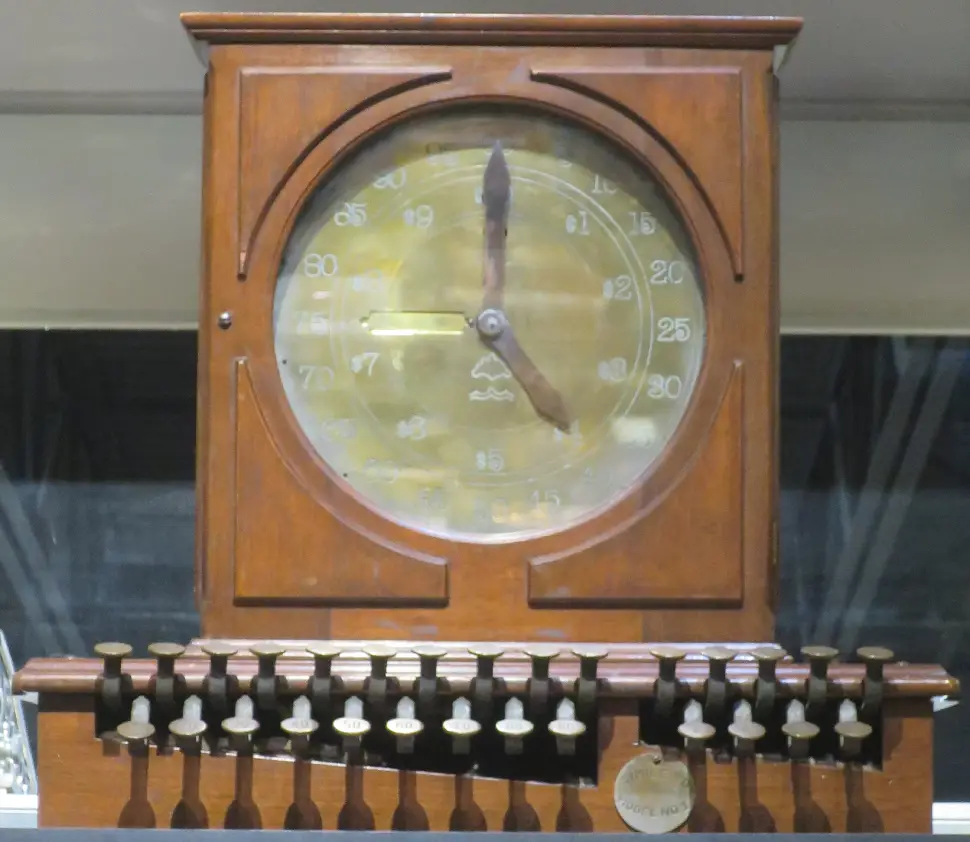
Reproduction of James Ritty's cash register. Photo: Wikipedia
1879 - The First Cash Register: James Ritty
The first cash registers operated with a manual crank. By turning this crank, the cash drawer would open, and the transaction was recorded. This required a physical action, highlighting the mechanical nature of the first cash registers. James Ritty conceived the idea for his invention during a boat trip to Europe, where he saw a device that counted the revolutions of the ship's propeller. This inspired him to develop a similar mechanism to record sales in his saloon. Together with his brother John, he founded "Ritty's Manufacturing Company," producing the first mechanical cash registers. In 1879, they designed a device they called the "Incorruptible Cashier," which recorded every sale and reduced the chance of theft. Ritty patented his design in 1883, with his patent application filed on 09-21-1883 and granted on 05-26-1885.

Photo illustration of James Ritty: © HRC DIGITAL B.V. - Photo inset James Ritty: Wikipedia
1884 - National Cash Register (NCR)
In 1884, Ritty's patent was acquired by John H. Patterson, the founder of what would become the National Cash Register Company (NCR). Under NCR's leadership, the production and distribution of cash registers were optimized, resulting in the introduction of new features such as a paper receipt, a cash drawer that opened automatically, and a bell ringing with every transaction. These innovations made cash registers popular with retailers worldwide. The bell and the characteristic "clanging" sound acted as audible confirmation of a sale and served a psychological function: they reminded staff that their actions were audible and thus controllable. From Mechanical to Electromechanical: Early 20th Century During this period, cash registers also gained a more decorative character. Many models were made from copper or bronze, often adorned with ornate decorations and engravings. Thus, the cash register functioned not only as a practical tool but also as an eye-catcher and status symbol within the shop environment. Refinement of Technology In the early 20th century, cash registers were refined with electrical and mechanical components such as a lockable cash drawer, electromagnets, and motors. NCR remained the market leader, but other manufacturers, including Sweda and Victor Adding Machine Co., emerged. 1920–1930 – Cash Registers with Integrated Calculators Around the 1920s–1930s, manufacturers began integrating calculation features into their machines, making it possible to quickly compute discounts, taxes, and totals. 1960-1980 - The Electronic Revolution First Electronic Cash Registers (ECR) In the 1960s, the first Electronic Cash Registers (ECR) appeared, using transistors and simple memory to store transactions. Key features included digital displays, programmable keys, and internal data storage.
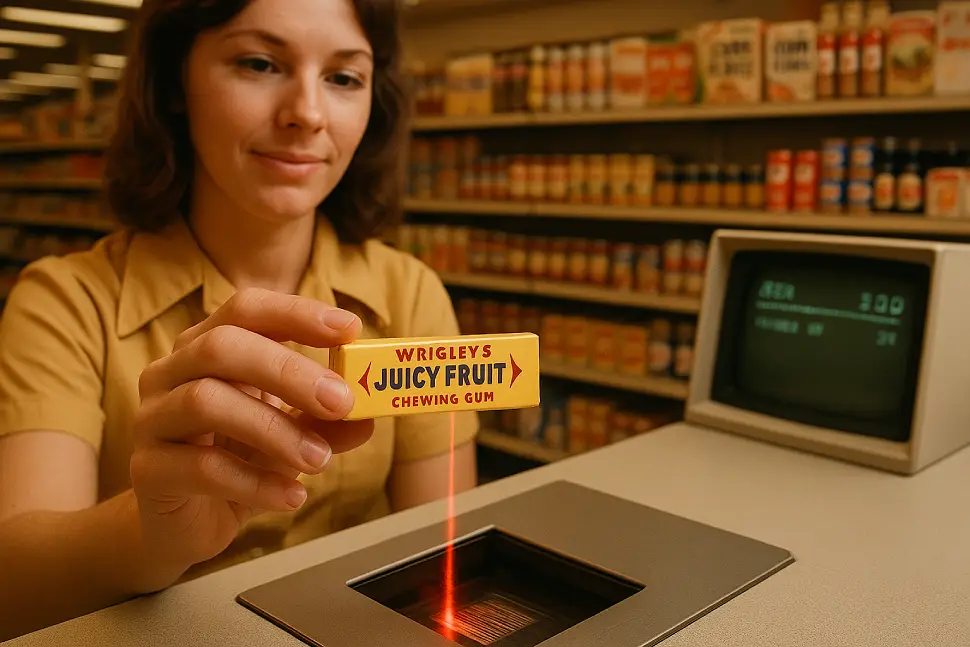
Photo illustration of the first barcode scan: © HRC DIGITAL B.V.
1974 - Barcodes and Scanners In 1974, the first UPC barcode was scanned in a supermarket in Ohio: a pack of Wrigley's gum. This revolutionized cash register technology with speed at checkout, inventory management via POS systems, and fewer errors from manual entry. The combination of ECR's with barcodes led to the first real Point of Sale (POS) systems. 1990–2000 – Software and Networks: The Breakthrough of the PC Register From the 1990s, cash registers transitioned to standard PC architecture. The focus shifted from hardware to software, with applications like Microsoft Retail Management System (RMS), Exact for Retail, and HRC POS beginning to dominate the market. These cash registers introduced a new generation of functionality, including real-time inventory management integration, customer management via integrated CRM functionalities, and comprehensive reporting and analytics. Moreover, more links were created with external systems such as accounting software, webshops, payment terminals, and loyalty programs. The cash register evolved from a closed system into a central hub in the retail landscape. Additionally, cash registers became more visibly displayed as a symbol of honesty and transparency towards customers. Dutch Context In the Netherlands, electronic cash registers were relatively quickly accepted from the 1970s, partly due to the rise of supermarkets. Cash receipts gained an additional role as a warranty or return proof. They became increasingly recognized as a legal document in complaints, returns, and warranty claims, enhancing consumer protection. Cash registers became more visibly displayed as a sign of honesty and transparency for customers.
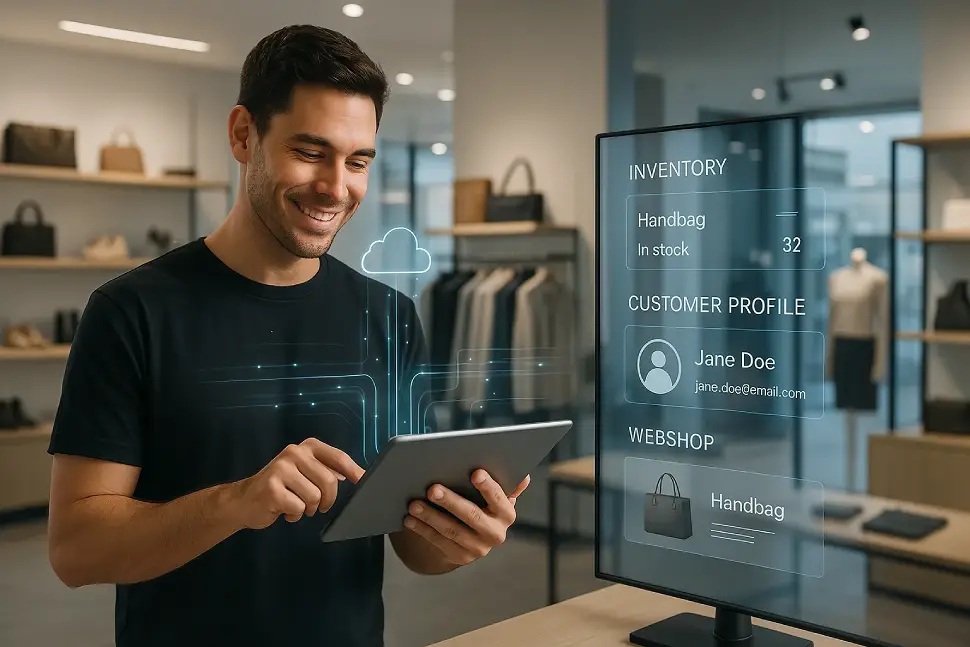
Photo illustration of cloud-based POS: © HRC DIGITAL B.V.
2010 - Mobile and Cloud-Based Registers Modern cash register systems play an increasingly vital role in omnichannel sales strategies. They connect physical stores to webshops and ensure that inventory management, customer data, and sales information are managed within a single system. Whenever a product is processed at the register, it is automatically deducted from inventory. Cash register systems for hospitality are crucial for the hospitality industry, giving entrepreneurs more time. Mobile POS (mPOS) With the rise of smartphones and tablets, mobile cash register systems emerged. Examples include iZettle (now part of PayPal), SumUp, and Square. These systems offer low entry costs, higher transaction fees, simple interfaces, and are popular among small entrepreneurs, markets, and the hospitality sector. Cloud-Based POS Systems Cloud-based systems like Shopify POS, Lightspeed, Vend, HRC One POS, and Booq made it possible to: Store register data in the cloud in real time, manage stores remotely, and automatically back up data. User-friendliness became a major focus during this time. Since sectors like hospitality and retail often employ temporary staff, it's essential for new workers to learn how to operate cash register systems quickly. Cash Registers with AI, Automation and Future Vision: 2020 and Beyond: Self-service registers Supermarkets and large chains are investing in self-service, allowing customers to scan and pay for products themselves. Technologies such as visual recognition (e.g., Amazon Go) and RFID even make fully cashless stores possible. AI-Driven Insights Modern POS systems collect large amounts of data. With artificial intelligence, entrepreneurs can predict sales trends, automatically reorder stock, optimize pricing strategies, analyze customer behavior, offer personalized promotions, and adjust marketing campaigns based on register data. Additionally, cash register systems are increasingly utilized as strategic tools for business operations. Through dashboards and predictive algorithms, entrepreneurs can make decisions about assortment, staff planning, and pricing based on real-time insights. The Cash Register of the Future According to the Foundation for Reliable Payment Systems (SBA), the cash register will further develop into a modular, cloud-native platform where hardware and software work seamlessly together. Significant developments include: Seamless integration with back-office, ERP, and accounting systems; Real-time data synchronization between branches and webshops; Smart recommendation algorithms for sales staff; Fully digital transaction streams, including e-receipts and automatic invoice linking; Increased focus on security and compliance (such as fiscalization). The cash register and the cash drawer are becoming less of an independent device and more a part of a broader IT infrastructure!
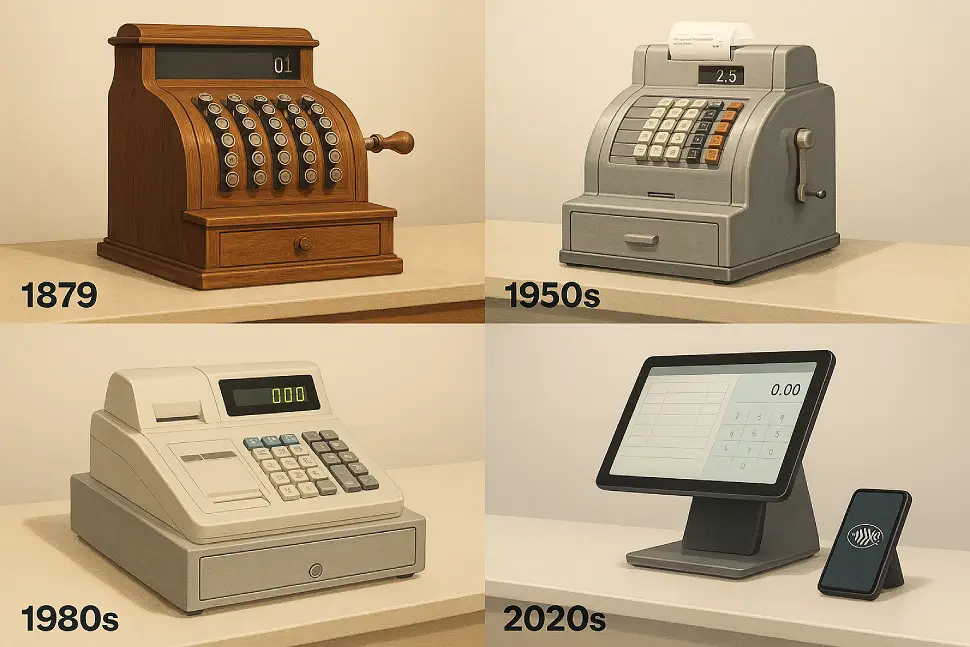
Photo illustration of POS through the years: © HRC DIGITAL B.V.
In Summary
From a mechanical box in a saloon to advanced AI-driven cloud solutions, the cash register has undergone an impressive evolution. Each stage in its development reflects broad societal, technological, and economic trends. What began as a solution against theft has grown into the central nervous system of modern retail, hospitality, and the hospitality sector. The future promises further automation, deeper integration with other systems, and potentially even the disappearance of the physical register as we know it, in favor of invisible, embedded payment solutions.